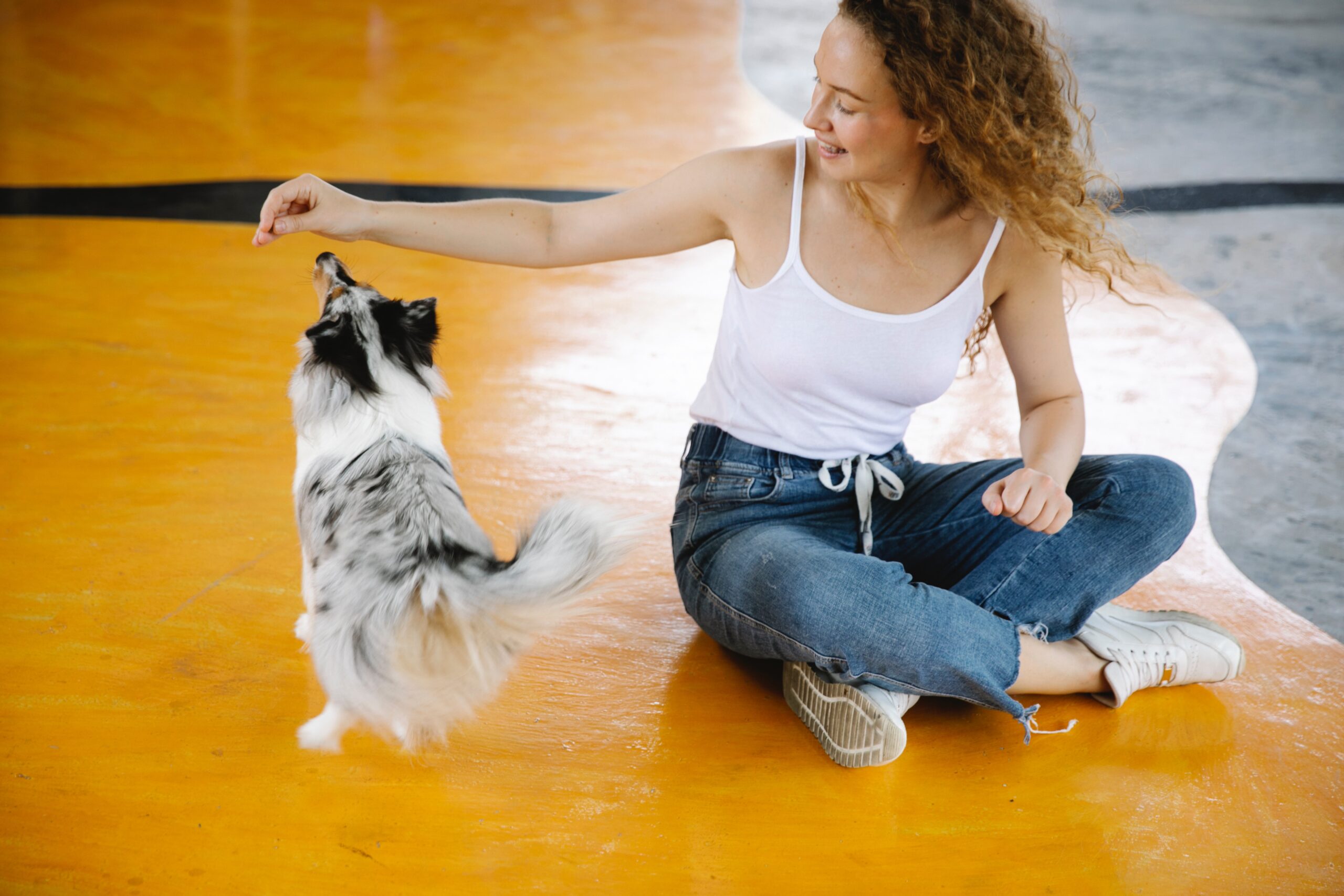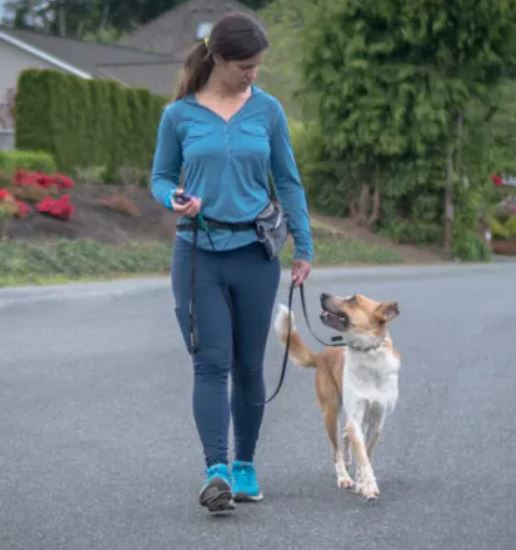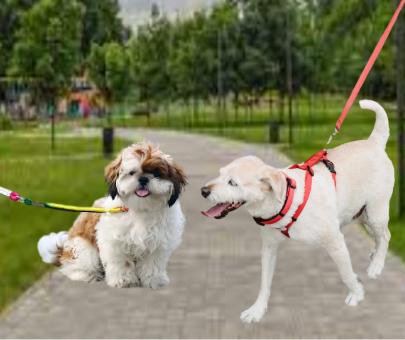Basic dog training post may contain affiliate links. Learn more on my Affiliate Disclosure page.
Basic dog training post may contain affiliate links, meaning I may receive a commission for purchases made through links. Learn more on my Affiliate Disclosure page.
Basic dog training commands and causing chaos? Do you dream of a well-behaved pup that listens to your every word? Look no further! This article will unravel the secrets of basic dog training behaviors that will turn your furry friend into an obedient superstar.
From teaching simple commands like sit and stay to mastering more challenging tasks like leash walking and recall, we've got you covered. Get ready to unleash the inner trainer within you as we explore effective techniques and practical tips.
Have you ever witnessed a dog flawlessly performing tricks or following instructions precisely? Seeing these four-legged creatures showcase their intelligence and obedience is awe-inspiring.
But let's be honest - behind those impressive displays lie hours of dedicated training by devoted pet parents like yourself. If you're wondering how they do it or where to even begin with basic dog training behaviors, fret not!
This article is here to guide you through the process step by step. Whether your dog is a curious puppy or an energetic adult, our expert advice will help you conquer common challenges and transform your canine companion into a well-mannered marvel in no time.
So, let's dive right in – get ready for some tail-wagging adventures in training!
Basic Dog Training Behaviors
Basic dog training behaviors are not just about teaching your dog to obey commands; they form the foundation of a well-behaved and happy canine companion.
Dogs trained in basic behaviors like sit, stay, and come are easier to manage at home and in public. These skills allow you to have better control over your furry friend, ensuring their safety and preventing them from getting into dangerous situations.
Moreover, basic training is essential for fostering a strong bond between you and your dog. Training sessions provide an opportunity for positive interactions and strengthen the trust between you two.
By consistently practicing these behaviors with your dog, you establish yourself as the pack leader, which can help address any behavior issues that may arise later on. Remember that dogs thrive on routine and leadership!
Additionally, basic training sets the stage for more advanced skills and activities such as sports or specialized tasks like therapy work or search-and-rescue missions.
Enhanced Safety and Control: With the Animire Service Dog Vest Harness and Leash Set, you can enjoy peace of mind knowing that your service dog is securely harnessed and easily controlled during outings. The adjustable straps and durable materials ensure a snug fit, providing maximum comfort for your furry companion.
The fundamental behaviors teach dogs how to learn new things through positive reinforcement methods, making it easier for them to grasp complex commands later.
Whether you aim to participate in competitive events or want a well-rounded family pet, investing time into teaching basic dog training behaviors will ultimately pay off in creating a happy, obedient companion for life.
Understanding Positive Reinforcement
Positive reinforcement is a key concept in basic dog training that focuses on rewarding desired behaviors rather than punishing undesirable ones. This method involves using rewards, such as treats, praise, or play, to reinforce good behavior and encourage your dog to repeat it.
The idea behind positive reinforcement is simple yet powerful: when dogs associate their actions with positive outcomes, they are more likely to engage in those behaviors again.
One crucial aspect of positive reinforcement is timing. Rewarding your dog immediately after it performs the desired behavior is vital.
Timing allows your pup to connect the action and the consequence more effectively. For example, if you want your dog to sit on command, give it a treat as soon as your pup's bottom touches the ground.
Delaying the reward may confuse your furry friend and weaken the association you aim to create.
Using consistent and clear cues also plays a significant role in positive reinforcement-based training.
Dogs are intelligent creatures capable of understanding words and gestures associated with specific actions or commands.
By using consistent verbal cues like sit or down coupled with visual signals such as hand gestures or pointing fingers, you can help your four-legged friend understand what behavior is being reinforced.
Did you know that dogs possess remarkable intelligence? They have the unique ability to comprehend words and gestures connected to specific actions or commands.

Clarity enables effective communication between you and your pup so that they can easily differentiate between various commands.
K9 Training Institute Free Workshop
The K9 Training Institute offers a free workshop where you can learn firsthand their effective training methods.
The Free Workshop emphasizes building a solid bond between you and your pup. They explain how to apply positive reinforcement techniques that make learning enjoyable for dogs and their owners.
Does your dog tug on its leash, bark constantly, and won't come when called? Sign Up and get the FREE Obedience Training Workshop Now!
Basic Dog Training Commands
Regarding basic dog training, teaching commands like sit, stay, and down are essential for ensuring your dog's safety and obedience. These commands lay the foundation for further training and help you establish a strong bond with your furry friend.
However, simply repeating the commands may only sometimes yield the desired results. It is essential to understand that dogs learn differently from humans and require patience and consistency.
When teaching the sit command, hold a treat close to your dog's nose while slowly raising it above its head.
As they follow the treat with their eyes or nose, their hindquarters will naturally lower into a sitting position. Immediately reward them with praise or another treat to reinforce this behavior positively.
For the stay command, begin by having your dog sit beside you and hold your open palm before them while saying Stay firmly. Take a small step back without turning away from them - if they remain in position, give them verbal praise or a treat before gradually increasing the distance.
The down command can be taught by first making sure that your dog is already in a sitting position.
Next, hold a treat near their nose and slowly move it toward the ground between their front paws as you say down. As they follow the motion of lowering their head to reach for the treat on the ground, gently guide their body down as well.
Once fully lying down on their side with their legs extended comfortably, offer plenty of positive reinforcement, such as verbal praise.
Keep Training Sessions Short And Fun
One of the critical aspects of successful dog training is keeping the training sessions short and fun.
Dogs, like humans, have limited attention spans. If you try to stretch a training session for too long, your furry friend may become bored, lose focus, and ultimately stop responding to your commands.
Keeping sessions short and sweet ensures that your dog remains engaged and eager to learn.
In addition to their short attention spans, dogs also thrive when training sessions are enjoyable.
Incorporating play and positive reinforcement into your sessions can make learning more exciting for them. Use toys or treats as rewards for good behavior or as exercise motivation.
Remember that every dog is different - some may respond well to treats, while others may prefer a game of fetch as their reward. Experiment with different techniques to determine what makes your pup most enthusiastic during training.
Remember that it's not about how long or how many commands you practice in one session; it's about the quality of those interactions with your furry companion.
By ensuring that each session is short yet impactful, using a variety of rewards, and making it enjoyable for you and your dog, you'll be on track to teaching basic behaviors successfully – while strengthening the bond between you two throughout the process!
Minimize Distractions
One of the critical elements in successfully teaching basic dog training behaviors is minimizing distractions.
Just like humans, dogs can easily get sidetracked and lose focus when there are too many distractions around them. These distractions can be a barrier to effective learning, whether it's other animals, loud noises, or even intriguing smells.
By gradually introducing distractions during training sessions, you can help your dog build their ability to remain focused and responsive in different environments.
- Start by choosing a quiet and familiar area for initial training sessions and gradually increase the level of distraction as your dog becomes more proficient in each behavior. This way, your furry friend will learn to ignore external stimuli and prioritize their attention on you.
- Moreover, it's essential to recognize that not all distractions are equal for every dog. What may distract one dog might not tempt another at all.
- Understanding your dog's triggers will allow you to tailor your training approach more effectively.
- Additionally, rewarding your pup with high-value treats or toys during training can also help boost their motivation to pay attention to you amidst potential distractions.
End Each Session On A Positive Note
Regarding basic dog training, one crucial aspect that should always be considered is ending each session on a positive note.
While it may be tempting to push your dog to learn more or correct their mistakes until they get it right, this approach can harm your furry friend's motivation and confidence.
By ending each training session with a good experience, you reinforce their progress and ensure that they associate training with something enjoyable.
- One effective way to end each session is by giving your dog plenty of praise and rewards for their efforts. Whether it's verbal praise, treats, or even gentle petting, these gestures will reinforce the behavior being taught and make your dog feel loved and appreciated.
- Remember, dogs thrive on positive reinforcement, so emphasizing the things they do right rather than focusing on what they do wrong helps build their confidence and enthusiasm for future sessions.
- Additionally, ending a training session with an easy task or command your dog has mastered can help them feel accomplished and motivated for the next session.
- Finishing off with something familiar allows your furry companion to end on a high note instead of feeling frustrated by any new challenges introduced during the lesson.
- This strategy encourages them to view training as a fun activity in which they can succeed rather than something daunting or overwhelming.
- Ending each basic dog training session on a positive note has significant benefits for you and your four-legged friend. By praising their efforts and incorporating small rewards
Basic Dog Training Leash Techniques
One of the most important aspects of basic dog training is teaching your furry friend how to walk on a leash properly. Leash walking may seem simple, but it can be challenging, especially for young or energetic dogs.
Encouraging proper leash walking techniques makes your walks more enjoyable and stress-free and helps establish a strong bond and communication between you and your dog.
When teaching leash walking, consistency is essential. Start by using a flat collar or harness and a standard leash.
Begin in a quiet, distraction-free environment before gradually introducing more distractions. Keep the leash loose and hold it close to your body so that you are guiding your dog rather than pulling it along.
It’s important to remember that this process takes time and patience – don’t expect perfection overnight! Instead, focus on rewarding positive behaviors such as staying by your side or responding to gentle leash cues while redirecting any unwanted pulling or lunging with calm corrections.
Another helpful technique for encouraging proper leash walking is using verbal cues. You can train your dog to respond accordingly during walks by associating specific words with desired actions.
For example, saying heel when you want them at your side or leaving it when you want them to ignore distractions can be highly effective once they understand the meaning behind these commands.
Always use the exact command words with your cues that motivate the behavior you want by offering treats or praise.

Be consistent with your cues and reward their obedience with treats or praise, reinforcing their understanding of what is expected.
How To Fix Unwanted Behaviors
Regarding basic dog training, addressing unwanted behaviors can be a common challenge. From excessive barking to destructive chewing, dogs may exhibit behaviors that frustrate their owners and pose risks to their well-being.
Instead of resorting to punishment or harsh methods, redirecting is an effective and humane approach to address these unwanted behaviors.
Redirecting involves acknowledging the dog's natural instincts and providing them with appropriate alternatives. For example, if your furry friend tends to chew on furniture legs, offer them a variety of durable chew toys instead.
By redirecting their attention and energy towards acceptable behavior, you are teaching them what is appropriate while preventing the repetition of unwanted actions.
Moreover, incorporating positive reinforcement techniques into redirection can further set this new desired behavior.
When your dog shows interest in their designated chew toy instead of the furniture leg, praise and reward them with treats or verbal affirmations. This reinforces positive habits and helps establish trust between you and your canine companion.
Never Punish
Punishment is an ineffective and outdated method when it comes to dog training. While it may temporarily suppress unwanted behaviors, it fails to address their underlying reasons.
Dogs are highly sensitive creatures who thrive on positive reinforcement and bonding with their owners. Instead of punishing, focus on reward-based training techniques that reinforce good behavior.
By rewarding your dog for performing desired actions, you create a positive learning environment and strengthen your canine-human relationship.
Moreover, punishment can have unintended consequences on a dog's emotional well-being. A punitive approach may instill fear or anxiety in your furry companion, leading to future behavioral issues or aggression towards you or others.
Remember that dogs do not understand punishment like we do; they respond to stimuli based on past experiences and instincts. By never punishing, we can foster trust, respect, and a desire to please our four-legged friends.
Embracing a punishment mindset requires patience and understanding, as it can take time for your dog to grasp new behaviors through positive reinforcement alone.
However, by consistently rewarding good conduct and redirecting negative behavior towards positive alternatives, you will empower your dog with the skills necessary for a happy and harmonious coexistence with humans.
In doing so, you are laying the foundation for lifelong obedience built on trust rather than fear—a bond that will continue to flourish over time.
Dog Taining Products
Dog training is an essential part of owning a canine companion, and having the right tools can make all the difference in achieving success. One popular dog training product is the treat dispenser. This device allows owners to reward their dogs for good behavior instantly, providing positive reinforcement in real-time. With a treat dispenser, owners can effectively teach their dogs commands such as sit or stay by offering a tasty treat as a reward whenever the desired behavior is displayed.
Another useful dog training product worth considering is the clicker. Clickers are small handheld devices that make a distinct clicking sound when pressed. They serve as a marker to signal to your dog that they have done something correctly and will be rewarded with a treat. The clicker helps to reinforce positive behaviors and create clear communication between owner and pet during training sessions. It's an effective tool for teaching tricks like roll over or more complex tasks like retrieving objects.
Socialization Basic Dog Training Skills
In addition to teaching basic obedience commands, fostering socialization skills is crucial for ensuring your dog behaves well in various social settings.
Socialization helps your furry companion interact comfortably with other dogs and humans, builds their confidence, and reduces anxiety.
- One effective way to promote socialization is through organized playdates or visits to a dog park. These environments allow your pup to practice appropriate greetings, share space with unfamiliar dogs, and experience positive interactions under your supervision.
- Another important aspect of socialization is exposing your dog to different stimuli, such as various sounds, people of all ages, different types of animals, and new environments.
By gradually introducing them to new experiences in a controlled manner, you can help desensitize any fears or anxieties they may have. This exposure should be done at their own pace and accompanied by positive reinforcement like treats or praise.
It's important to remember that every interaction shapes their behavior and mindset toward future encounters.
By actively incorporating socialization exercises into your dog's training routine, you set them up for success in various real-life scenarios.

Encouraging healthy interactions with other dogs can prevent aggressive behavior, while making regular encounters with different people can reduce fear-based reactions.
So make sure you dedicate sufficient time and effort to helping your beloved pup become the well-adjusted friend they were meant to be!
Free K9 Basic Dog Training Workshop
New dog parents or pet owners looking for help to train their furry companions can now get access to a free workshop offered by the K9 Training Institute.
This workshop teaches basic dog training behaviors and is perfect for those just beginning to raise a well-behaved and obedient pup.
By participating in this workshop, new dog parents will gain invaluable knowledge on effectively communicating with their four-legged friends and establish a strong foundation for further training.
The K9 Training Institute understands that every dog is unique and requires individualized attention. With this in mind, the free workshop provides personalized guidance tailored to each participant's needs.
The workshop covers all necessary aspects of canine behavior training, from leash-walking techniques to basic obedience commands like sit, stay, and come.
In addition to practical demonstrations, participants will learn about positive reinforcement methods that encourage good behavior without resorting to punishment or fear-based techniques.
Take advantage of this incredible opportunity! Register for the free workshop today here at the Pro Paw Tips website. Click the FREE DOG TRAINING blue button.
Equip yourself with the essential skills needed to ensure a harmonious relationship with your furry friend while setting them up for success in their ongoing development as well-behaved canine companions.
Take advantage of this chance to tap into expert advice and support from experienced trainers who genuinely care about your pet's well-being and happiness.
















